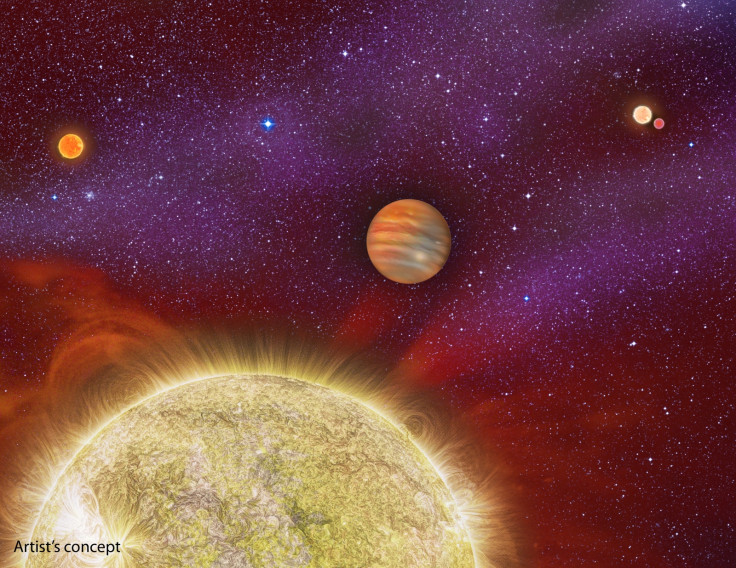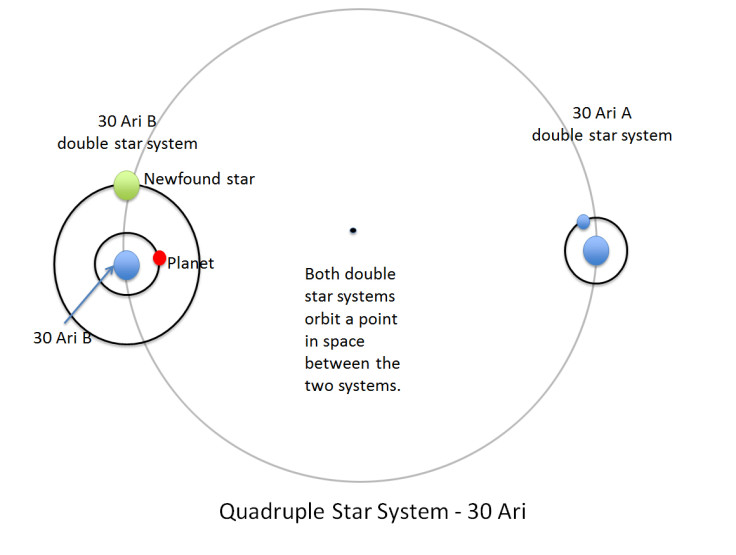Enormous exoplanet with quadruple star system discovered 136 light years away

An enormous gaseous planet with four stars has been discovered 136 light years away. The planet, in a system dubbed 30 Ari, is 10 times the mass of Jupiter and orbits its primary star every 335 days.
It is only the second time a planet has been found in a quadruple star system and suggests planets like these could be far rarer than once thought.
Researchers from Nasa discovered it in the constellation Aries. The primary star has a relatively close partner star, which the planet does not orbit. The pair is locked in a long-distance orbit with another pair of stars 1,670 AU away (one AU is the distance between Earth and the sun – about 93 million miles). They do not believe the planet or any moons that may be orbiting it could sustain life.

If life did exist on the planet, though, the stars would look like one small sun and two very bright stars that could be visible in the daytime. The single sun viewed with a telescope would be shown to be the two stars orbiting each other.
Lead author Lewis Roberts, from Nasa's Jet Propulsion Laboratory, said: "Star systems come in myriad forms. There can be single stars, binary stars, triple stars, even quintuple star systems. It's amazing the way nature puts these things together."
The researchers hope to understand how multiple stars can affect developing planets. Current evidence suggests they can change their orbits and cause some to grow more massive.
The study was published in the Astronomical Journal.
© Copyright IBTimes 2025. All rights reserved.






















